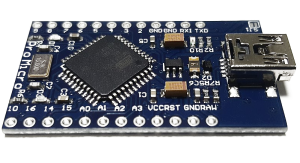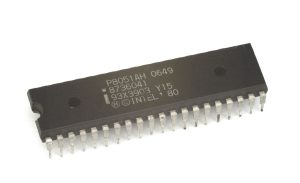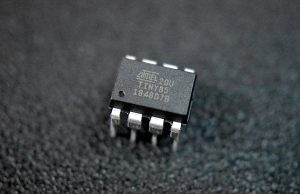
What is a Microcontroller?: Types, Companies, and Microcontroller vs. FPGA
August 07 2023  1275
1275
Inquiry
Global electronic component supplier AMPHEO PTY LTD: Rich inventory for one-stop shopping. Inquire easily, and receive fast, customized solutions and quotes.
QUICK RFQ
ADD TO RFQ LIST
In this blog, we will discuss the basics of microcontrollers, including Types of Microcontrollers, Popular Microcontroller Companies, Microcontroller vs. FPGA, and so on.
What is a Microcontroller?
A microcontroller is a small, self-contained computer that is designed to control a specific electronic system. Microcontrollers typically have a CPU, memory, and input/output (I/O) ports. They are often used in embedded systems, which are systems that are not general-purpose computers. It contains all the components of a computer, including a processor, memory, and input/output (I/O) ports. Microcontrollers are used in a wide variety of electronic devices, including appliances, toys, industrial controls, and medical devices.
Types of Microcontrollers
There are many different types of microcontrollers available, each with its own strengths and weaknesses. Some of the most common types of microcontrollers include:8-bit microcontrollers
The simplest and most affordable type of microcontroller. They are often used in low-cost devices, such as toys and appliances. Two 8-bit microcontrollers examples: 8051 Microcontroller
- A Harvard architecture with separate program and data memory
- A wide variety of I/O ports
- A built-in timer/counter
- A serial port

- A small footprint (4 x 4 mm)
- A low power consumption (< 5 mA)
- A wide variety of I/O ports
- A built-in timer/counter
- A serial port
16-bit microcontrollers
Offer more processing power and memory than 8-bit microcontrollers. They are often used in more complex devices, such as industrial controls and medical devices.32-bit microcontrollers
Offer the most processing power and memory of all three types. They are often used in high-performance devices, such as networking equipment and automotive electronics.Applications of Microcontrollers
Microcontrollers are used in a wide variety of applications, including:- Home appliances: Washing machines, refrigerators, and microwave ovens. They control the basic functions of these appliances, such as turning them on and off, adjusting the settings, and monitoring the status.
- Automotive systems: Engine control, transmission control, and airbag deployment. They control the operation of these systems, ensuring that they function properly and safely.
- Industrial control systems: Factory automation and process control. They control the operation of these systems, ensuring that they function efficiently and reliably.
- Medical devices: Pacemakers, insulin pumps, and defibrillators. They control the operation of these devices, ensuring that they provide safe and effective treatment.
- Consumer electronics: Televisions, radios, and cameras. They control the basic functions of these devices, such as turning them on and off, adjusting the settings, and displaying images.
- Networking devices: Routers, switches, and firewalls. They control the operation of these devices, ensuring that they function properly and securely.
- Robotics: Industrial robots, medical robots, and personal robots. They control the operation of these robots, ensuring that they can perform their tasks accurately and safely.
- Scientific instruments: Oscilloscopes, spectrometers, and microscopes. They control the operation of these instruments, ensuring that they can collect and analyze data accurately.
Popular Microcontroller Companies
Some of the most popular microcontroller companies include:- Atmel
- Microchip
- Texas Instruments
- STMicroelectronics
- NXP
Microcontroller vs. FPGA
Microcontrollers and FPGAs are both integrated circuits (ICs) that can be programmed to perform a variety of tasks. However, there are some key differences between the two technologies. Microcontrollers are pre-programmed devices that are designed for a specific application. They typically have a fixed architecture, which means that they cannot be changed after they are manufactured. Microcontrollers are relatively simple and inexpensive, making them well-suited for low-cost devices. FPGAs are programmable logic devices that can be configured to perform a variety of tasks. They have a reconfigurable architecture, which means that they can be changed after they are manufactured. FPGAs are more complex and expensive than microcontrollers, but they are also more powerful. Here is a table that summarizes the key differences between microcontrollers and FPGAs:| Feature | Microcontroller | FPGA |
| Architecture | Fixed | Reconfigurable |
| Complexity | Simple | Complex |
| Cost | Inexpensive | Expensive |
| Power consumption | Low | High |
| Applications | Low-cost devices, embedded systems | High-performance applications, custom designs |
| Technology might be Used | Home appliances, toys, calculators, remote controls | Network routers, telecommunications equipment, medical devices, automotive electronics |
Conclusion
Microcontrollers are small, powerful computers that are used in a wide variety of applications. They are becoming increasingly important in the world around us, and they are sure to play an even more important role in the future.Microcontrollers FAQ
What is Microcontroller? A microcontroller is a small computer on a single integrated circuit (IC) chip. It contains one or more CPUs along with memory and programmable input/output (I/O) peripherals. Program memory in the form of ferroelectric RAM, NOR flash or OTP ROM is also often included on chip, as well as a small amount of RAM. Microcontrollers are designed for embedded applications, in contrast to the microprocessors used in personal computers or other general purpose applications consisting of various discrete chips. What are the differences between Microcontrollers and Microprocessor? The main differences between microcontrollers and microprocessors are:- Microcontrollers have memory and I/O peripherals on the chip, while microprocessors do not. This makes microcontrollers easier to use and more compact, but it also limits their flexibility.
- Microcontrollers are typically designed for embedded applications, while microprocessors are typically designed for general purpose applications. This means that microcontrollers are often optimized for low power consumption and real-time performance, while microprocessors are often optimized for high performance and expandability.
- 8-bit microcontrollers, such as the Intel 8031 and 8051, are commonly used in simple applications that do not require a lot of processing power. They have a data width of 8 bits, which means that they can only process 8 bits of data at a time. This limits their performance and accuracy in some applications.
- 16-bit microcontrollers, such as the Intel 8096, are used in more complex applications that require higher processing power and accuracy. They have a data width of 16 bits, which means that they can process 16 bits of data at a time. This allows them to perform more complex calculations and provide more accurate results.
Populer Posts
EP3C40U484C8N
Intel
EP4CGX22CF19C7
Intel
EP2AGX45DF25C5
Intel
EL2480CS
Renesas Electronics Corporation
EP2AGX260FF35C5N
Intel
LFE2-70E-5F672C
Lattice Semiconductor Corporation
5SGXEA7K3F35I4N
Intel
10AX016C4U19I3LG
Intel
1ST210EU1F50I2VGAS
Intel
EP3C10U256A7N
Intel
EP1S60F1020C7N
Intel
5SGXEB5R2F43C2LG
Intel
